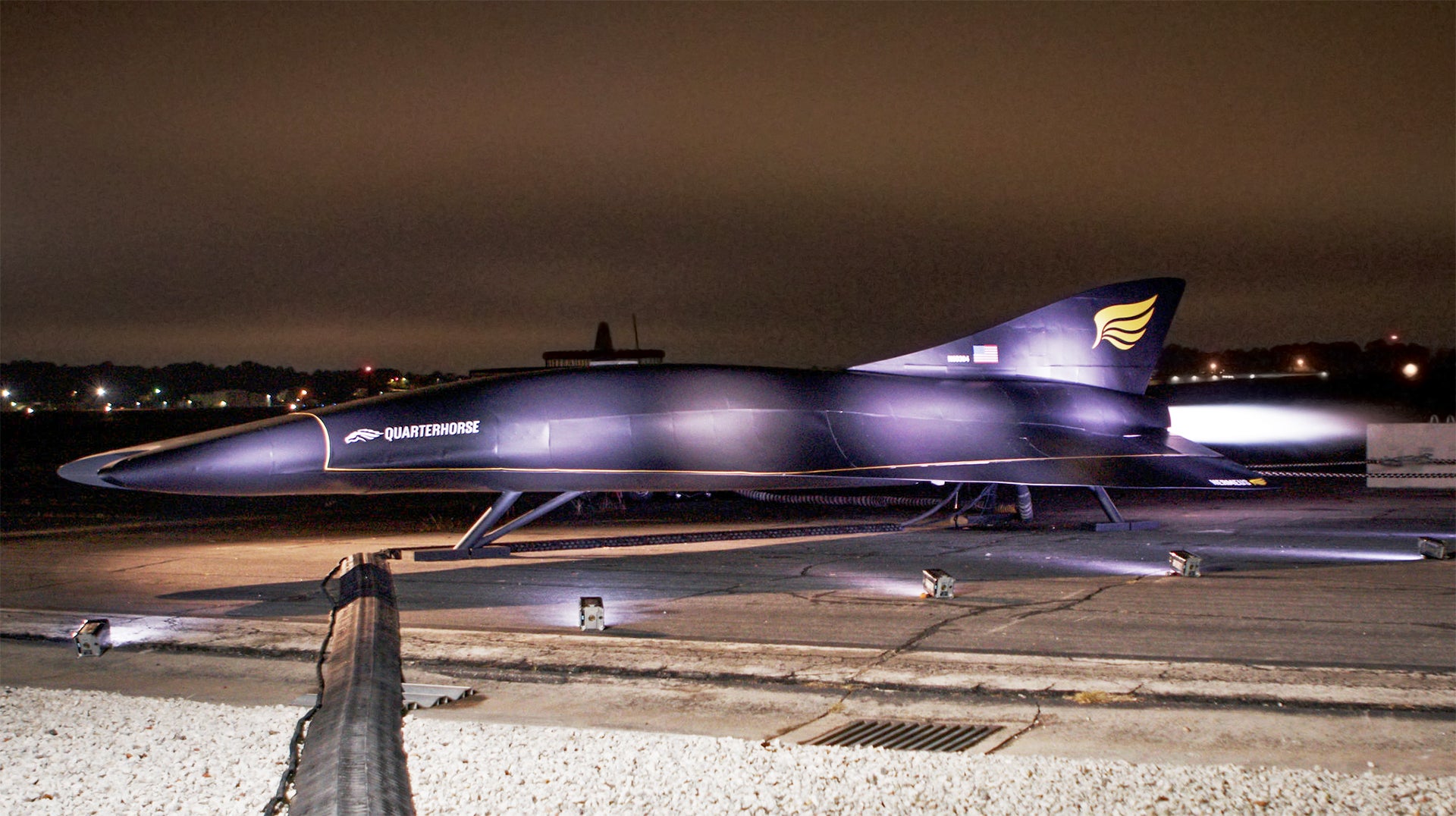Hypersonic aviation startup Hermeus added flair to a ceremony to unveil its first prototype design, the Quarterhorse, when it started its engine and set it to full afterburner. The reusable unmanned aircraft remained static on the ground throughout the presentation, but the company hopes to achieve a first flight as soon as next year.
Hermeus issued a press release about this event today. The company had announced in August that it secured some $60 million in funding from the U.S. Air Force and venture capital firms to support the Quarterhorse flight test program. At that time, it said it hoped to have the aircraft actually flying within 18 months.

The Air Force has invested in Hermeus ostensibly as part of a broader effort to explore potential future hypersonic and supersonic executive transport aircraft concepts, but the various technologies at play could certainly have other applications. Air Force Brig. Gen. Jason Lindsey, the Program Executive Officer for Presidential and Executive Airlift, which is managing the service’s contract with Hermeus, was among those who attended the unveiling ceremony last week.

“When an aerospace company typically unveils a new aircraft, it’s nothing more than Styrofoam and fiberglass,” Skyler Shuford, Hermeus’ COO, said at the event. “But at Hermeus, we drive to integrated products. And we really, really like to make fire.”
“We designed, manufactured, and integrated the aircraft, from nothing but an outer shape, in four months,” he added.
However, it’s not entirely clear if what the company unveiled last week is actually set to be a flying prototype itself. It has no rudder, and there are no other clearly apparent flight control surfaces. It also appears to lack any sort of landing gear.
This is not the first time Hermeus conducted a ground test of the engine it is using inside Quarterhorse, which is a so-called turbine-based combined cycle (TBCC) design. A TBCC arrangement combines a ramjet or scramjet with a more traditional jet turbine. The conventional turbine portion of Hermeus’ TBCC is a General Electric J85 turbojet, a popular engine used in various aircraft, including the Air Force’s T-38 Talon jet trainer. This J85 firing may be what we are actually seeing in the imagery from the unveiling event last week.


Ramjets and scramjets have difficulty working properly at low speeds, which often requires high-supersonic or hypersonic air vehicles to be launched using some sort of rocket booster and makes conventional runway landings more complicated. In principle, a TBCC configuration would allow an aircraft to take off from and land on a runway like any other using its regular turbojet, but use its ramjet or scramjet during the middle portion of a flight. This would greatly increase the flexibility of the design by allowing it to use existing airport infrastructure and offering a way around regulations on commercial flight operations at supersonic speeds and above, among other potential benefits.
Hermeus says Quarterhorse will be able to achieve hypersonic speeds — typically considered anything above Mach 5. “At these speeds — over 3,000 miles per hour — flight times from New York to London will be 90 minutes rather than seven hours,” the company’s press release says. “Mach 5 aircraft have the potential to create an additional four trillion dollars of global economic growth per year, unlocking significant resources that can be utilized to solve the world’s great problems.”
It will certainly be interesting to see how Quarterhorse actually performs when flight testing begins and it has a chance to go soaring at full power.
Contact the author: joe@thedrive.com
